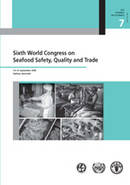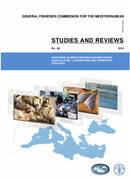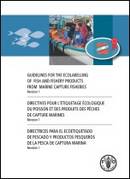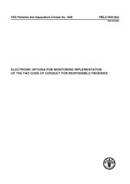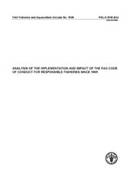Publicaciones
Fish and fish products are among the most traded food commodities: close to 40 percent by volume ends up in international markets. About half of those exports by value originate in developing countries.
Sixth World Congress on Seafood Safety, Quality and Trade. Sydney, Australia,14–16 September 2005. Edited byDavid JamesConsultantFAO Fisheries and Aquaculture DepartmentLahsen AbabouchChiefFish Utilization and Marketing ServiceFAO Fisheries and Aquaculture DepartmentandSally WashingtonConsultantFAO Fisheries and Aquaculture DepartmentFAO Fisheries Proceedings
The purpose of this report is to provide an overview of the marine aquaculture industry in the Mediterranean and its markets based on national country reports submitted by national marketing experts selected in the Mediterranean countries.
This document is an output of the project “Support to the GFCM Working Group on Marketing of Aquaculture Products: Development of a Strategy for Marketing and Promotion of Mediterranean Aquaculture (MedAquaMarket)”. The purpose of this report is to provide an...
Las Directrices para el ecoetiquetado de pescado y productos pesqueros de la pesca de captura marina son facultativas. Éstas se aplican a los sistemas de ecoetiquetado cuya finalidad es certificar y promover etiquetas para los productos de una pesca de captura marina bien ordenada, y se centran en las cuestiones relacionadas con la utilización sostenible de los recursos pesqueros. Las directives se refieren a principios, consideraciones generales, términos y definiciones, requisitos sustantivos mínimos y criterios,...
This circular provides an assessment of the technical practicability, advantages, constraints and cost of using electronic reporting as part of the biennial survey on the implementation of the 1995 FAO Code of Conduct for Responsible Fisheries. In this context, electronic reporting is defined as conducting a survey (questionnaire) electronically in a format that enables statistical analysis and reports to be generated without re-entering the survey information manually. Two types of electronic reporting are investigated: spreadsheet-based...
This circular analyses the implementation and the impact of the FAO Code of Conduct for Responsible Fisheries since 1995. In doing so, it first establishes a picture of fisheries and aquaculture sectors before the publication of the Code and 13 years after, in order to detect major changes in both sectors. While fundamental changes in the fisheries sector remained few, the aquaculture sector displays a rather important degree of change, where practices in farm management...


